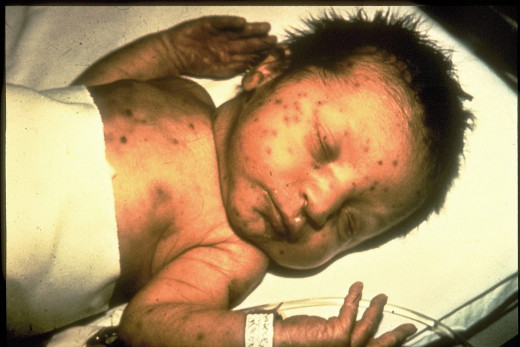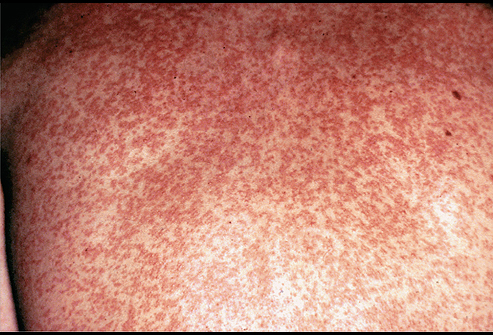Rubella Viral Infection: Epidemiology, Clinical Features And Diagnosis
Clinical Features Of Congenital Rubella

Epidemiology And Pathogenesis
Rubella is an exanthema caused by an RNA virus (50 to 85 nm in size) belonging to the family of togaviruses. The disease is characterized by mild constitutional symptoms and rash. Its importance is due to the risk of producing fetal abnormalities and abortion if it occurs in women during the early months of pregnancy.
Epidemiology: The infection spreads through droplets and entry is through the nasopharynx. Infective period starts one week before the onset of the rash and it lasts for one week after the rash fades. Virus is present in the nasopharyngeal secretion one week before the onset of the illness. In the early stage, viremia occurs. The virus reaches the fetus through the placenta and causes lesions in the fetus. The baby sheds the virus at birth and continues to be infective for 6 to 31 months. The disease is prevalent in the community and small epidemics may occur from time to time. Many cases may be subclinical . An attack confers lifelong immunity. In Western countries, it is estimated that 10 to 15% of adult women are susceptible to infection. In India, the disease is not infrequent, though reliable statistically figures are not available.
Pathogenesis: The virus is present in blood up to two days before the onset of the rash. Lymph nodes are moderately enlarged, showing edema and hyperplasia. When the fetus is affected, the virus multiplies in the liver, spleen, bone marrow and other tissues and leads to various structural malformations in the heart, nervous systems, eyes and the limbs.
Congenital Rubella
Rubella embryopathy results either from inhibition of cell growth or cellular necrosis. Fetal defects include retardation of growth, eye defects like cataract, glaucoma or retinopathy, heart lesions, deafness, mental retardation, hepatosplenomegaly and skeletal abnormalities.
Physical Presentation Of Rubella

Infectious Diseases
Clinical Manifestations And Diagnosis Of Rubella
Clinical Manifestations
The incubation period is usually 2 to 3 weeks. The onset is sudden with malaise, fever, rashes and characteristic enlargement of the occipital, posterior auricular and posterior cervical glands.
The rash which resembles that of measles begins on the face and neck and spreads to the trunk and limbs. Compared to measles, the rash is less extensive. Enanthema may occur consisting of discrete rose coloured spots on the palate and fauces. The rash becomes discrete by the second day and it disappears in 3 to 4 days.
Compared to measles, constitutional symptoms are mild in children. In addition to fever and malaise, arthralgias, joint stiffness and headache may occur. Rarely, serious neurological complications like encephalitis, encephalomyelopathy or polyneuropathy develop 5 to 10 days after the onset. Thrombocytopenia may develop in a few.
Diagnosis
Clinically, the disease should be suspected when fever, posterior cervical lymphadenopathy and rash occur in a young subject. Rubella has to be distinguished from measles, secondary stage of syphilis, drug rashes, infectious mononucleosis and ECHO. Coxsackie and adenovirus infections. The leucocyte count is normal in rubella. Specific diagnosis is established by finding a four-fold increase in hemagglutination inhibition antibodies in paired sera or by isolating the virus.
© 2014 Funom Theophilus Makama









